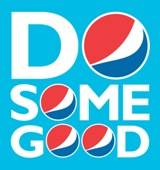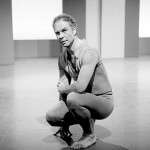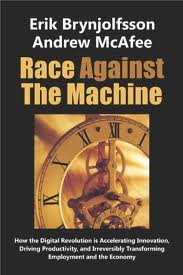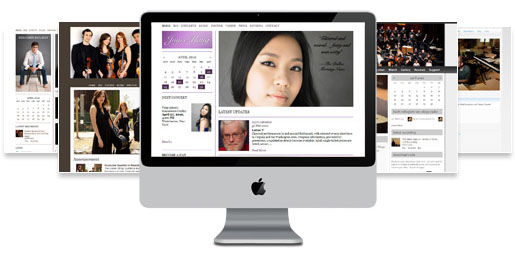Many industries have begun utilizing 3D printing to make work easier and more efficient. This technology is even making its way into the arts. Broadway theatres, university theatre departments, and theatres everywhere are implementing 3D printing technologies to construct props, and even to build entire sets. 3D printing brings new elements of realism and creativity into theatre. It is the future of stage and set design by enabling mass customization of specific designs and independent of outside factors, such as time constraints and availability. In recent years, the market for 3D printers in theatre has shifted from DIY projects to machines for professionals.
Wearable Technology in the Performing Arts
White Paper Wednesday: The Classroom, Arts, and Tech
What Data Tells Us About The Future of Nonprofit Arts Institutions
Museum Data and What To Do With It – Children’s Museum of Pittsburgh Part One
News Roundup: New Possibilities In 3D
AMT-Lab contributors are always looking at all sorts of new technologies in the world of 3D. With the increasing popularity of technologies such as 3D printing, the possibilities continue to emerge. These new technologies and their uses in the art world keep us interested in how the intersection of art and technology impact our world.
PIPS:lab Diespace, Interactive Multimedia Experience
PIPS:lab recently made its US debut during a festival featuring Dutch artists here in Pittsburgh. The Amsterdam group has been performing together for about a dozen years. The work that they performed was categorized as absurdist media theater and was a short evening length work without intermission. The use of technology for this performing group is integral. The performance itself was noteworthy for its innovation on a number of different levels. It is worth noting, however, the problems that PIPS:lab had in functionally executing the performance due to glitchy technology. The performance, Diespace, was essentially an introduction to a fictional new social network site that audience members were encouraged to visit after they die (or die in order to visit). The actors polled the audience about their opinions regarding whether or not there is life after (or before, humorously) death. These polls were conducted with a cool audience participation tool of light capture setup where the audience essentially wrote on a screen upstage.
The other insertion of tech into the performance involved video/audio remixes of various clips taken of audience member during and before the show. These clips were then edited in real time into the performance. This, in turn, served to engage the audience but through a pretty controlled format. The display of the video and audio taken from the audience drew laughter and made the audience excited and was a high point of the performance lending to greater investment from the collective. Additional audience participate was to be had through a lottery during the show where the faces of the audience were put into a virtual tumbler on the screen upstage. Three audience members won prizes with the grand prize being a premium account for Diespace (which included significant stage time for the audience member who won it).

The performance unfolded at a relatively brisk pace with musical interludes to cover moments where the technology and content was being prepped. The problem with this was that the performers ended up being a bit un-invested in the music and as a result it was hard to be carried away by the performance. It was easy to check out during these scenes through the distractions on stage. It was the sense of this reviewer that there was only one true musician on stage, a fact that was born out by the program notes about the artists backgrounds.
At least three times during the performance there were loud warnings of a computer crash each time forcing the performers on stage to repeat a few moments to a few minutes of the action. This in turn lent to a stutter stop feel to the performance. Execution of Diespace did not look like it was easy and to be certain what PIPS:lab is trying to do is not easy in general. They deserve applause for attempting to stitch together so many constituent elements in the moment. It was fascinating at times to see the failures of the technology and there was rarely a moment where the audience did not have something that they could try to be engaged in. The relative successes and failures of this performance reinforce the point that some technologies have a ways to go before they are both accessible to independent performing artists.
The innovation of groups like PIPS:lab hopefully will be the wave of the future and it is gratifying to see media artists take the stage with musicians and actors. The combination of talents of stage was a rich soup and Diespace was a valuable experience for the insights that it gave with regards to generation of true multi-disciplinary live work.
Creators Project in San Francisco
 Last weekend the Creator's Project garnered significant attention from national media. From the mission statement on the website "The Creators Project is a global celebration of art and technology." and "The Creators Project is a new kind of arts and culture channel for a new kind of world." As an intersection between art and tech it seems appropriate that the blog weigh in and take a look at what they did, how they did it, and the implications. The Creator's Project has major sponsorship from Intel Corp and VICE with significant online free content focusing on mostly short form interview of Creator associated artists. This Project offers similar promise to other ventures to offering culture and arts online to ideas such as On The Boards TV and Jacob's Pillow Virtual Pillow but is already operating on a much larger scale than either of these.
Last weekend the Creator's Project garnered significant attention from national media. From the mission statement on the website "The Creators Project is a global celebration of art and technology." and "The Creators Project is a new kind of arts and culture channel for a new kind of world." As an intersection between art and tech it seems appropriate that the blog weigh in and take a look at what they did, how they did it, and the implications. The Creator's Project has major sponsorship from Intel Corp and VICE with significant online free content focusing on mostly short form interview of Creator associated artists. This Project offers similar promise to other ventures to offering culture and arts online to ideas such as On The Boards TV and Jacob's Pillow Virtual Pillow but is already operating on a much larger scale than either of these.
The Creators Project offers arts and culture online at a scale that is extraordinary for such a young institution. The levels of participation on information sharing that is happening through their website looks unparalleled and should be looked towards as a model for successful integration of technology and the arts. The Creators Project was started in May of 2010 by VICE and seems to have two major interfaces with the public. There is a exhibit/show that has toured around the world each year and an expanding web presence that now counts video downloads in the millions. The content is broken out into six different categories: Music, Film, Art, Design, Gaming, and Fashion and has engaged with artists from all of these areas to provide content online and for the annual festival. They will be rolling out content collected from the event last weekend (March 17-19, 2012) in the coming weeks.
Current content on the website is a mind blowing array of new directions taken by artists in each of the fields. One of the standout artists at the event last weekend was a new work from visual multidisciplinary artist Chris Milk. The installation called the Treachery of Sanctuary incorporated user interaction with digital transformation to look at elements of flight. Visuals of this can be found here.
Anther fascinating example that was found on the Creator's Project website was the Electronic Shadow from France. Electronic Shadow uses imaging technology and software to generate interactive 3D maps of people places and objects. These images then can be used and manipulated in artistic fashions. The implication for this technology would, for instance, be a game changing one for other art forms such as dance.
Exchange of ideas such as Creator's Project bring together the bleeding edge of Technology and the Arts and as such should be a point of engagement for institutions that are looking to modernize and include new audiences (and younger audiences). The artists involved have obviously successfully engaged these audiences already and by following the lead of these success stories arts leaders at more conventional organizations can find hope in a new direction in reshaping structure and content to address the demands of a more complex world.
The Cloud
 Moving your organization's data to a cloud server might be a good idea at this time. There are several advantages to working off of a cloud server and a few drawbacks.
Some advantages to going to cloud computing:
Moving your organization's data to a cloud server might be a good idea at this time. There are several advantages to working off of a cloud server and a few drawbacks.
Some advantages to going to cloud computing:
Accessibility is generally improved through cloud storage. You can access data from anywhere that you have internet access.
Security on cloud storage services is up to the standard of where ever you have your cloud. Google and Amazon have some of the best experts on digital security in the world for instance and using a cloud operated by them gives you a greater degree of safety for your data.
The Capacity of cloud storage is very flexible and is expandable with comparative ease. The fact that cloud storage servers will never need to be upgraded or replaced does save you capital expenses as well as man hours.
The downside:
You don't own it and you have to play by someone else's rules. If you are using a smaller company, please, make sure to check out their backup plans, security measures, and records regarding downtime and maintenance schedules.
It may be hard to use cloud servers with certain types of databases or other programs and as such may present an integration issue (ticketing systems, development programs, etc). Make sure you have a plan to get the information from point A to point B if necessary.
In event that you don't have access to the internet you are completely cut off unless you back up to a physical source onsite. It can be distressing for obvious reasons if your internet service goes sideways and you end up with multiple idle employees until it is restored.
Mobile Fundraising Applications: The Apple policy over one year later
 Apple banned fundraising apps for the iPhone, iPad, and iPod over a year ago (to much controversy) just as the first fundraising app hit the market through eBay/MissionFish. The field of software for fundraising as a result of the ban is anemic.
Until this policy is removed it seems unlikely that major fundraising will take place via mobile applications. As the iPhone is the number one smart phone on the market developers have much less incentive to build software for fundraising purposes. It can be extrapolated that once the ban is lifted the fund-raising/development world will be playing catch-up for years.
Apple banned fundraising apps for the iPhone, iPad, and iPod over a year ago (to much controversy) just as the first fundraising app hit the market through eBay/MissionFish. The field of software for fundraising as a result of the ban is anemic.
Until this policy is removed it seems unlikely that major fundraising will take place via mobile applications. As the iPhone is the number one smart phone on the market developers have much less incentive to build software for fundraising purposes. It can be extrapolated that once the ban is lifted the fund-raising/development world will be playing catch-up for years.
Here are two notable successes/efforts to do fundraising through mobile apps over the last year:
eBay and Missionfish are on the verge of offering donation capabilities through eBay's mobile application for Android (it was originally intended for the iPhone). These donations should be relatively easy to put through and involves the user downloading the mobile eBay application and then searching for your cause. On the organization's end the donation item has to be set up as well as the account which will interface with paypal.
In the UK a group called Marie Curie Cancer Care managed to get around the ban by setting up an app that allows users to request donations from friends through text messaging. The application itself doesn't collect the funds but is party to gathering them.
If you want to take action, you can sign the current petition to overturn the ban here.
The Rise of Online Philanthropic Contests
 Over the past couple of years or so there has been a steady rise in the phenomena of competitive voting contests for not for profit organizations to receive grants for projects or operations. These contests are run by large corporations as well as not for profit groups. Examples of corporate contests take different shapes such as Pepsi's with the Pepsi Refresh Project which gives grants ranging from $5k to $50k based on competitive community voting toChase Community Giving which touts donations over $600 million dollars through Facebook contests. The National Trust for Historic Preservation has similarly put contests into place by granting to various historic restoration projects based on the number of votes they receive online.
Over the past couple of years or so there has been a steady rise in the phenomena of competitive voting contests for not for profit organizations to receive grants for projects or operations. These contests are run by large corporations as well as not for profit groups. Examples of corporate contests take different shapes such as Pepsi's with the Pepsi Refresh Project which gives grants ranging from $5k to $50k based on competitive community voting toChase Community Giving which touts donations over $600 million dollars through Facebook contests. The National Trust for Historic Preservation has similarly put contests into place by granting to various historic restoration projects based on the number of votes they receive online.
Whether these contests sit well with critic's ethical concerns or not, the volume of web traffic generated for the recipients, the donor organizations, and the organizations who compete but do not win is remarkable. According to Pepsi, the most recent contest in the fall of 2011 garnered more than half a million distinct registrations with over 3.5 million votes counted on the Pepsi site alone. If you aggregate this number with all of the site visits, social network hits, and emails then you have a truly noteworthy phenomena.
Why are people so invigorated by these contests? There are less time intensive ways to earn money in aggregate. One can point to the idea that the contest is a game and the competition itself is what people are engaging in more than the philanthropic cause. It could also be argued that the community effort of building a team to go online and vote for the cause for multiple days has an intrinsic value as well and that by the simple act of building this team you are building and drawing constituents deeper into the arts community.
As these online contest continue even more organizations are starting to do them. The Humane Society recently used a online photo contest to raise hundreds of thousands of dollars, the Case Foundation has been running a voter based contest for years, and American Express has also run contests in the past.
The following are some tips that have been gleaned from articles and criticism of various contests mentioned previously:
1) Make sure that the contest aligns with your mission. By diverting resources for a potential pie in the sky pot of money you can detract from your organization's true work.
2) Ask what your organization can gain from competing for these pots of money? Set forward goals of community building and identify volunteers to assist with these aims.
3) If you are going to market this to your patrons identify your budget for staff time and delegate a reasonably proportional amount of money to pursue getting the word out.
4) Don't start mid-steam. Almost all winners of these contests have strong starts and once you are behind in the voting it is hard to keep up. If you see a contest in progress that you would have liked to take part in simply put it on your calendar for an effort next year as your opportunity may all ready have passed.
Performing Arts Legacies Online
 Recently the Merce Cunningham Dance Company shut down following the death of Merce Cunningham. The action taken by the founder are somewhat unique in the world of the arts and there have been observations of what this means. Meanwhile the content of the Merce Cunningham Company, at least in part can still be found online through various video projects and the archive left by the company through the Living Legacy Plan and maintained by the Merce Cunningham Trust. The continued availability of this content is carrying on the legacy in the true spirit of its founder who frequently wrote of the transitory nature of his performance and was a student of Buddhist philosophy.
Recently the Merce Cunningham Dance Company shut down following the death of Merce Cunningham. The action taken by the founder are somewhat unique in the world of the arts and there have been observations of what this means. Meanwhile the content of the Merce Cunningham Company, at least in part can still be found online through various video projects and the archive left by the company through the Living Legacy Plan and maintained by the Merce Cunningham Trust. The continued availability of this content is carrying on the legacy in the true spirit of its founder who frequently wrote of the transitory nature of his performance and was a student of Buddhist philosophy.
Further performances have resided online for years through projects like On The Boards TV which is currently celebrating its two year anniversary with a sale of online content. The content can be accessed through one time rental, purchase, and through subscription and is high quality, having been shot on 4-5 hi-definition cameras. Through content providers like On The Boards TV and do it yourself online venues such as YouTube and Vimeo the amount of online performing arts content has grown significantly. Artists are gradually recognizing that real content online is critical for accessing new audiences and maximizing market penetration.
Innovation in the field of dance and theater can go deeper than this. Critics have noticed a trend at fringe festivals of micro-performances and intimate theater. While artists seem to be taking advantage of physical spaces for the time being, the possibilities for using digital spaces are increasing everyday. The idea of doing live performances online has certainly received attention. The growth of services such as Skype make interfacing virtually and therefore using these same services as a performance venue more likely every year.
SOPA and PIPA - Fighting online piracy or stopping innovation? Open source alternatives to common utilities.
 This Wednesday, 1/18/2012, Wikipedia, Reddit , and Boing Boing will go dark in protest of the Stop Online Piracy Act that is being considered in US House and the Protect Intellectual Property Act in the US Senate. These protesters are asking for the US public to call or write to their elected officials regarding the proposed legislation. Bloggers in this forum have taken a stance against limiting open source and net neutrality in the past and these two bills pose no less of a threat to the innovative culture that is open source.
This Wednesday, 1/18/2012, Wikipedia, Reddit , and Boing Boing will go dark in protest of the Stop Online Piracy Act that is being considered in US House and the Protect Intellectual Property Act in the US Senate. These protesters are asking for the US public to call or write to their elected officials regarding the proposed legislation. Bloggers in this forum have taken a stance against limiting open source and net neutrality in the past and these two bills pose no less of a threat to the innovative culture that is open source.
Although there has been a healthy open source community for decades, legislation like SOPA or PIPA would exclude open source software opportunities to developers in the US if passed. These bills would essentially lock down portions of the internet to users in the US by creating a federally kept blacklist of internet sites that internet service providers would in turn prevent from being served to their US customers. This would prevent the US public from accessing the steady stream of free content from the open source community that has been continuously redefining the online world for decades.
Open source has been the frontier of technological innovation for decades and by passing this legislation the US Congress will simply ensure that the next Facebook, Google, or Amazon simply never get off the ground from US soil. In celebration of Open Source a list has been compiled with some great open source alternatives to common commercial software packages that can be downloaded for free:
1) OpenOffice: Similar functionality to MS Suite with modules for word processing, spreadsheets, databases, presentation and drawing
2) Dia: Produces charts and flowcharts like MS Visio.
3) WordPress and Joomla: WYSIWYG web page builders that compare favorably with aspects of Adobe Dreamweaver.
4) paint.net: An image editing program with much of the some of the same functionalityof Photoshop.
5) Pidgin: A messaging aggregator, useful in communicating with all the disparate messaging programs out there.
*) Foxit: A pdf reader that won't bog down your system and won't update every six hours like Adobe Acrobat does.
In Case You Missed It - November 2011
 Thanksgiving is coming up, which means a brief hiatus in the posts here. Let’s take a quick look at some of the great posts we had this month, and hear from our bloggers about what they’re thankful for in the realm of technology.
Technology in the Arts took a look at turning digital billboards into art galleries and discussed Facebook and arts organizations in honor of Mark Zuckerberg’s visit to Carnegie Mellon University.
Thanksgiving is coming up, which means a brief hiatus in the posts here. Let’s take a quick look at some of the great posts we had this month, and hear from our bloggers about what they’re thankful for in the realm of technology.
Technology in the Arts took a look at turning digital billboards into art galleries and discussed Facebook and arts organizations in honor of Mark Zuckerberg’s visit to Carnegie Mellon University.
Congress took some time this month to consider a bill to reduce internet regulation, and we discussed how that would impact Net Neutrality.
We also had an amazing guest post by Ashley Paulisick about smartphone apps in art museums, and an interesting piece on how artists are informing the public about pollution. I hope you check out all our wonderful articles from November. Now let’s hear from the Technology in the Arts staff about what they’re grateful for this holiday season –
"I am thankful for ARTStor Digital Library. Nothing makes you appreciate a work of art more than to get up close and personal with the brushstrokes, the pigment, and your computer screen. Zoom in, zoom in, zoom in. Happy Thanksgiving to all our Technology in the Arts Followers!"
"As it pertains to technology, I'm thankful for the three things I can't live without: Google Reader, The New York Times, and HBO. And I can't forget the main things I'm thankful for: my family, my friends, my health, and the chance to learn and work with so many talented people on a daily basis here at Carnegie Mellon."
"Technologically speaking, I'm thankful for a lot of things, but a few stand out simply because they are outstanding:
Google Translate and Google Maps, for without them I'd be lost both physically and linguistically!
Google Art Project for enabling me to see what I never thought I could!
Artfinder and Paddle8 for helping me discover new art and artists no matter where I may be!"
I am thankful for the ever widening world of the arts online. I am thankful that I can now access challenging content through portals like http://www.ontheboards.tv/
I'm grateful that art musuems have embraced modern technology and now let me whip out my cell phone while in the galleries. What once felt taboo now seems encouraged.
I'm thankful for Spotify this year...totally.
That's all folks - have a happy and safe Thanksgiving!
Is it time to adopt 3D?
1) Market penetration is reaching a critical mass. 3D enabled devices now dominate the market and are poised to become a standard feature of home entertainment. 2) The cost of buying 3D enabled devices has gone down. TVs, playback devices (game consoles, dvr devices, etc), and cameras are more affordable than ever. 3) 3D Tech is now making strides into mobile devices with Nintendo, Google, and Motorola notably making devices and content for 3D mobile. 4) The tech offers solutions to art forms that heretofor were previously poorly served by older 2D imaging technology (aka dance and opera)
Cons:
1) 3D on film has been linked to nausea and headaches and even in video there have been questions about eye strain although these problems only seem to afflict a small portion of audience members. Evidently the trick is to not focus on out of focus images on the screen if you suffer from these problems. 2) It will be a couple more years before the majority of TV’s and Mobile devices can run 3D content. As with any technology there is only a point to which it will grow as people are reluctant to buy a 3D enabled HD TV (or playback device) a year after they shelled out for a new HD TV set. 3) There is the possibility that another breakthrough will be made in imaging that will make current imaging technology obsolete. For now, however, the long-term outlook seems to be favoring the current technology’s dominance for the next 6-8 years. 4) You still need those pesky glasses (for now at least).
One could argue that 3D still has a ways to go. The cutting edge of the field however offers the potential for much much more spectacular devices. Now that it is becoming fiscally accessible some artists and organizations have waded in and started experimenting but the potential remains largely untapped. Whatever happens, it will pay to keep a watch on this technology
The Arts and the Race Against the Machine
 Will art ever be created by a machine? This is the question that is sometimes asked, late at night over a glass of wine. Perhaps it has been already. Authors Erik Brynjolfsson and and Andrew McAfee ask similar questions and explore the answers in their new book “Race Against the Machine: How the Digital Revolution is Accelerating.” Machines are playing an increasingly prevalent role in the work force and millions of jobs have been changed or replaced by computers or automated process. There is now a program called Stats Monkey that is being used to write about sports. Stats Monkey uses pattern recognition to generate summaries about sporting events. Although this program does not seem to be in usage by any major publication, it highlights the progress that has been made in the advancement of technology and the subsequent replacement of millions of workers by automated, computer controlled devices.
For now, the arts world can sigh with relief. It seems as though most endeavors which require intuition are safe from encroachment by computerized processes. We can assume that artists of all stripes are considered “high-skilled” and are intuitive in the creation process. Both of these characteristics make artists of all stripes the safest categories of workers at this point in time. The pursuit of making art isn’t simple. Artists of all kinds exist within a complex cultural context and react intuitively to it. This context also makes it extremely difficult for machines to interact. You could argue that Heather Knight’s Silicon Based Comedy is the first inroad on this front, but it still seems a bit far away. The complex human interactions intrinsic in the performing arts are a distant land from the world of automated tasks and promise to remain that way for quite some time.
Will art ever be created by a machine? This is the question that is sometimes asked, late at night over a glass of wine. Perhaps it has been already. Authors Erik Brynjolfsson and and Andrew McAfee ask similar questions and explore the answers in their new book “Race Against the Machine: How the Digital Revolution is Accelerating.” Machines are playing an increasingly prevalent role in the work force and millions of jobs have been changed or replaced by computers or automated process. There is now a program called Stats Monkey that is being used to write about sports. Stats Monkey uses pattern recognition to generate summaries about sporting events. Although this program does not seem to be in usage by any major publication, it highlights the progress that has been made in the advancement of technology and the subsequent replacement of millions of workers by automated, computer controlled devices.
For now, the arts world can sigh with relief. It seems as though most endeavors which require intuition are safe from encroachment by computerized processes. We can assume that artists of all stripes are considered “high-skilled” and are intuitive in the creation process. Both of these characteristics make artists of all stripes the safest categories of workers at this point in time. The pursuit of making art isn’t simple. Artists of all kinds exist within a complex cultural context and react intuitively to it. This context also makes it extremely difficult for machines to interact. You could argue that Heather Knight’s Silicon Based Comedy is the first inroad on this front, but it still seems a bit far away. The complex human interactions intrinsic in the performing arts are a distant land from the world of automated tasks and promise to remain that way for quite some time.
Another barrier to program or automaton generation of art in all forms is the fact that there is a plethora of artists who are working in the market for little or no money. From the standpoint of economics the lack of money in the majority of the arts field gives developers little reason to make inroads artistic process by replacing people with automation. Aside from the rockstar phenomena in the arts world, there simply isn’t the money in it to make it worth the time.
As technology speeds along we can be assured that these advancements will affect the arts. Already kickstarter promises to reshape the field of development in the arts by cutting out the administrative middleman and connecting artists directly to funders. Will increasingly sophisticated templates and design programs begin to make inroads into graphic design? Will marketing in social media be able to be automated? Will marketing in general be able to be automated. Certain facilities tasks are already being monitored by computers. Vacuuming lobby or gallery floors could be taken over by a fleet of roomba robots.
How will the future of technology manifest in the arts world? Surely at some point in time it is conceivable that a computer will generate a work of art and sell to some museum. This will inevitably make the news. This will spark controversy. Will actors be replaced through cgi? Well, the clear answer to that is not yet. Stage actors are even safer from replacement, but how about stage crews?
It is impossible to discern how exactly machines will interact with the arts. Watching the development of cutting edge technologies can gives clues. Possibilities to interact with our patrons lie largely untapped in the areas of 3d, holography, and new software applications. As with other industries, it is incumbent on artists to watch the horizon and harness technology as it comes into being, otherwise we end up being reactive and being blind-sided by change.
In Case You Missed It - October 2011
 The leaves have fallen down and the air has begun to crack with cold – October is ending! Here’s a look back at some of the big topics our we tackled this month.
Not only does Technology in the Arts recognize the need to protect federal funding for the arts, we also took a look at how artists can protect themselves and their digital intellectual properties.
The leaves have fallen down and the air has begun to crack with cold – October is ending! Here’s a look back at some of the big topics our we tackled this month.
Not only does Technology in the Arts recognize the need to protect federal funding for the arts, we also took a look at how artists can protect themselves and their digital intellectual properties.
From there, we took a look at how the arts and business can cohabitate peacefully with the BMW Guggenheim lab.
We gave everyone some insight about into up-and-coming demographic, The Millennials, and how your organization can reach them.
Of course, all work and no play makes this a boring blog. We discussed how arts organizations can utilize a game dynamic, as well as took a closer look at the mobile app game integrated into the experience of the Tate Modern.
We had loads of great articles this month, and I hope you take some time to check out them all. Enjoy the weekend and have a fun and safe Halloween!
10 Takeaways From the 2011 Emerging Practice Seminar
CultureLab, a partnership between an informal consortium of arts consultants and the Cultural Policy Center (CPC) at the University of Chicago, recently held an 'Emerging Practice Seminar' in April. The organization was formed to break down the silos of research, policy and practice, and create a new capacity and approach to tackling challenging issues. The topics at this year's seminar were:
- Uses of technology in audience engagement
- Revenue management and dynamic pricing
The seminar's website features all of the speakers' presentations (both videos and slides) and is an extremely helpful resource!
Here were my top 10 takeaways from the 'Use of Technology in Audience Engagement' portion of the seminar.
1. Embrace technological innovation, there's nothing to fear! Tim Roberts of ARTS Australia provided an introduction to the day's topics. Tim's introduction called attention to the unfortunate fact that any arts managers and organizations still view technology as something they are fighting against. He quoted NEA chairmen Rocco Landsman as saying "the arts are battling the technology invasion". Roberts argues that many also believed cable television to be the death of television and photography to be the death of painting and that technical innovation has not caused the death of an artform but has contributed to its spread and created new audiences.
Uses of Technology in Audience Engagement - Tim Roberts from Cultural Policy Center on Vimeo.
2. Engagement is an ongoing process: Technology is least effective when it's not used in a proper context of engagement. This process of engagement often begins prior to the audience coming through the doors. Likewise, the process shouldn't end after the performance or visit ends. Technology can help to provide context to a piece of art or performance, personalize the experience and even augment the experience. There are many options when it comes to sustaining a deeper level of audience engagement.
3. Layered Arts Experiences are cool! This type of technology has been extremely underutilized in the performing arts sector. Layered Arts Experiences offer audiences options for real-time assistance imperative during arts programs. They can come in the form of supertitles for opera and dance performances. The Columbus Symphony Orchestra had a device called the 'Concert Companion' which enabled patrons to read something about the piece they were hearing as they listened to the concert.
4. Museums continue to lead the way when it comes to adapting technology: Another common theme during the seminar was the overwhelming lack of technological innovation in performing arts organizations. Even though there were examples of organizations using layered arts experience tools and mobile interactions, it seemed as though they were few and far between and many had even stopped using these tools.
5. The verdict is still out on Tweet Seats: A 'Tweet Seat' is simply a seat reserved in a theater for Twitter users. Tweet Seats have many benefits, including: encouraging a younger audience demographic to get involved in the performance, having this demographic spread the word about the performance to their Twitter followers, and cutting down on distracting other audience members by blocking off a section for Twitter users. The question, however, remains whether or not people can truly become immersed in a performance if they are multi-tasking with other technological devices.
6. Mobile Interaction isn't just limited to QR Codes in Museums Ron Evans of Group of Minds had some great ideas about ways to engage audiences via mobile devices. Evans suggested placing a QR Code on tickets for previews of the show. Evans also suggested distributing digital keepsakes after shows. He also discussed the importance of using these mobile technologies in the proper context of audience engagement. Unfortunately, most technology has focused on the pre-performance and pre-sale with the sole intention of making the sale and increasing attendance. Engaging audiences should also involve increasing their understanding and appreciation of an artform. The 'during' and 'after' is just as important to leading people to the next experience.
Mobile Interaction: adding content and context - Ron Evans from Cultural Policy Center on Vimeo.
7. Location Based Servies has a long way to go: Devon Smith presented the findings of a research study she conducted on arts organizations using location based services. Location Based Service is simply a service that uses the geographical position of a mobile device (Foursquare, Yelp, Google Maps). Applications like Foursquare can be useful in providing real-time analytics on the demographic of those who are "checking in" to a venue. Smith's study found that only 36% of the 76 nonprofit theatres she tracked, had properly claimed their venues on Foursquare, yet 97% of the venues had a mayor. Even though claimed venues had 3% more activity, the real-time analytic information could be very useful to any organization.
8. Blogging Isn't Dead!: Thomas Wickell of Malmo Opera shared one of the most interesting case studies of the day. Wickell emphasized the importance of viewing the stage from the audience's perspective as opposed to looking out at the audience from the stage. With this key distinction in mind, Wickell and his team found that the audience they wanted to attract was not responsive to traditional channels of advertisement (newspapers, television, etc). Since most of their target audience were highly engaged online, the team created a blog that was centered around the life of a character in an upcoming opera. The blog became so popular, at one point in time, traffic to the blog surpassed that of the company's main website! The staff even invited readers to a ceremony for the character (since she does not survive) and over 100 people came to pay tribute to her life. The blog can still be found here!
9. Technological Innovation Often Requires a Culture Change Within an Organization : Linda Garrison and Thomas Weitz at Steppenwolf Theatre gave an overview of helpful practices for creating video content. An important theme during this presentation was the importance of finding allies when seeking to implement any changes. Whether designing a new video campaign or placing QR codes on marketing material, implementing new technology can often mean a culture change within an organization. Finding out who your champions, advocates and contributors are beforehand can make a world of difference when proposing any sort of change. It's also well worth your time to watch the Steppenwolf videos here.
10. Know Your Target! The Steppenwolf and Malmo case studies highlighted the importance of understanding who the target audience is prior to implementing any of the strategies and tools listed above. Steppenwolf researched and found their audience tended to be highly educated, comfortable with direct marketing and confined to a very specific geographic location. As a result, Steppenwolf decided that an online video campaign could be effective in engaging their audience. The Malmo Opera worked backward and began by envisioning what type of audience they wanted to attract. Either way, this process is extremely effective when the target audience is clearly defined.
4 Tools for Creating Websites on the Fly
 Recently, I’ve been hearing about website creation platforms for artists, musicians, and designers. (They are also great for student portfolios!) These days, many people are starting to focus their efforts on mobile apps or websites, but still more may lack a functional, easy-to-use website in the first place or need a secondary site, like a company intranet or a micro-site for an exhibit or show.
I’ve found four that are worth checking out if you’ve been thinking about creating a website. The interfaces for these website creation platforms are very easy to use, with no coding required. If you have all your copy ready and your songs or artwork prepped, you can create a professional-looking website in about an hour, hosted by the site. Many of them are cheap or even free. Here’s a four tools for creating a website on the fly:
Wix.com: Individual artists and small organizations
Recently, I’ve been hearing about website creation platforms for artists, musicians, and designers. (They are also great for student portfolios!) These days, many people are starting to focus their efforts on mobile apps or websites, but still more may lack a functional, easy-to-use website in the first place or need a secondary site, like a company intranet or a micro-site for an exhibit or show.
I’ve found four that are worth checking out if you’ve been thinking about creating a website. The interfaces for these website creation platforms are very easy to use, with no coding required. If you have all your copy ready and your songs or artwork prepped, you can create a professional-looking website in about an hour, hosted by the site. Many of them are cheap or even free. Here’s a four tools for creating a website on the fly:
Wix.com: Individual artists and small organizations
One of the easiest, cheapest (free!) options I’ve seen out there is Wix.com. It produces great looking websites, with hundreds of free templates. Best for individuals or small groups, there are lots of options for photographers, designers, or artists here, and I also saw a few modeling/acting pages and a musician page with a music player for musicians or ensembles.
Wix is really good for people who just need something simple and don’t care too much about the site being particularly flexible. For example, I ran into problems posting lengthy text (like a full resume) in the page of the website, because the page sizes are set. Of course, you always have the option to link to an outside page or a PDF if this happens, but it’s important to be aware of the limitations. For this reason, I would recommend this tool to individual artists/ensembles or smaller organizations who just need something simple that they don’t necessarily want to deal with updating very often.
Another disadvantage is that Wix uses Flash, which means that the site cannot be viewed on iPhone, but for sites that will likely be viewed only on desktop/laptop computers or Android phones, Wix is fast, easy, and free.
Google Sites: A helpful collaboration tool
Google Sites (formerly Google Pages) also has some good options for individual artists, but what really impressed me was the templates built specifically for business collaboration. These sites may be useful for arts managers who are working on projects with outside companies or production managers who are trying to coordinate a design team who are working in 5 different cities in the initial planning phases of a production. Google also emphasizes that many businesses use Google Sites for company intranets or wikis.
There are a number of versatile templates, which you can play around with here.
Maestro WebBuilder: Classical Music Organizations, Ensembles and Artists
 For those of you who are still hung up on the Flash-iPhone compatibility issue, I have two tools for you: InstantEncore’s Maestro WebBuilder and WordPress. Maestro WebBuilder is part of the InstantEncore suite of tools for classical music organizations and musical artists who primarily play classical music. (We had a fascinating interview with the COO of InstantEncore a few months ago--check it out.)
For those of you who are still hung up on the Flash-iPhone compatibility issue, I have two tools for you: InstantEncore’s Maestro WebBuilder and WordPress. Maestro WebBuilder is part of the InstantEncore suite of tools for classical music organizations and musical artists who primarily play classical music. (We had a fascinating interview with the COO of InstantEncore a few months ago--check it out.)
What’s great about Maestro WebBuilder is that, by building your website through InstantEncore, you are already set up to pull all the information into a mobile website or app. Maestro WebBuilder is a paid tool, but it's cheap, and it gives you the flexibility to easily convert content on your site into a mobile platform and makes it extremely easy to streamline all your social media presences into one system.
Wordpress: A tool for nearly everyone and everything
When you think of WordPress, you probably automatically think “blog”, but you can also build a nice-looking and functional website on the platform. Of course, it is the ideal choice if you want to fold a blog into your site. For example, the Technology in the Arts blog is run on WordPress. The front page is the most recent blog articles, of course, but we also have a number of “static” pages or pages that change less frequently with (shameless plug) resources for the arts field, publications we’ve produced, and webinars focused on ways that arts managers can use technology to meet their mission and goals.
With WordPress, there are thousands of templates out there, some of which are cheap and some of which are free. You can find a very professional-looking one without spending a lot of money. Ceci Dadisman of the Operagasm blog is a big advocate of WordPress as a way for arts organizations to save money.
It's also a good option if you are not a web expert, but want to/are willing to learn the basics of content management and HTML. It's easy to set up and maintain a basic site, but there's room to grow if you decide to get fancy. There are the thousands of WordPress plug-ins out there that you can download to jazz it up. For example, look at the top of this post. See the box with the number of times this article has been tweeted? That’s a WordPress plug-in! Scroll down to the comments section. Disqus pulls in comments from Twitter and Facebook. That’s also a WordPress plug-in! You have lots of options to connect your site with the greater community.
Arts and Technology Round-up: Museums and the Web Edition
Happy Friday everyone! For this arts and technology round-up we decided to try and hone in on a few of the awesome projects that we saw at the Museums and the Web conference last week. Up first are our picks of some of the best and most innovative projects. After that, the winners of the Best of the Web 2011 awards from the conference.
Technology In The Arts Picks
Zooniverse - This group marries together the researching needs of the scientific/historical communities and the power of crowdsourcing. By creating a series of interactive web portals, Zooniverse creates communities of "Citizen Scientists".
PhilaHistory - Philly based GIS firm Azavea worked with the City of Philadelphia to create a platform for linking historical photos of the city to their real world locations using geo-location and augmented reality.
One To One with the Artist: Ai Weiwei - A simple idea with a great effect, this project from the Tate allowed museum visitors to record and upload a video in the gallery and have a video dialogue with the artist Ai Weiwei.
The WALL - The Museum of Copenhagen's giant multi-touch multimedia screen installed in one of the central squares of Copenhagen.
ARTfinder - A new recommendation engine for artwork, this site works very much like Last.fm, taking your current interests and using them to introduce you to new works.
The Collective - Sounding a little bit like a bad 50's sci-fi flick, The Collective is the Denver Art Museum's interactive website/online programming space and a new way of connecting and bringing in the Denver community.
MoMA Learn - An extremely in-depth arts education web portal, the Museum of Modern Art's education department went all out on this one.
ARtours - The Stedelijk Museum's innovative augmented reality program.
The Best of the Web 2011
Education & Best Overall: The ACMI Generator
Mobile: The AB EX NY iPad app
Exhibition: Henri Cartier-Bresson: The Modern Century
Innovative: Nationnaal Historisch Museum / Museum of National History
Museum Professional & People's Choice: Smithsonian Web and New Media Strategy Wiki
Long-Lived: Exploratorium.org
Research/Online Collection: Portable Antiquities Scheme
Audio/Visual/Podcast: Access All Areas podcast
Project by a Small Institution: ASI: Archaeology Scene Investigations in North County Louth










